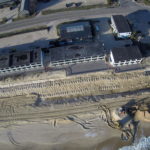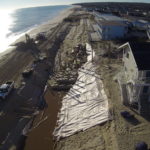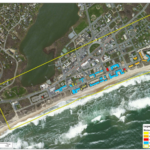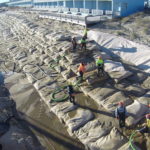Company:
TenCate Geosynthetics Americas Pendergrass, GA
Project Details
Fabric 1
Geotube®
Producer:
TenCate Geosynthetics
Engineer Name 1
Steve Couch
Engineer Company 1
USACE NY District
Fabrication Company
TenCate Geosynthetics
Project Manager Name
Mike Alessi
Project Manager Company
H&L Contracting
Installation Name
Keith Haney
Installation Company
H&L Contracting
Please describe the project specifications
The dune reinforcement alternative consists of dune reinforcement along 3,100 linear feet of the shoreline, waterward of existing shoreline structures in downtown Montauk. The dune reinforcement alternative includes placement of approximately 14,560 sand filled geotextile sand containers (GSC) placed below the sand fill. This alternative requires approximately 71,000 cubic yards of sand, 51,000 of which will be obtained from upland sources rather than offshore borrow areas.
The GSC reinforced dune extends from a toe elevation of +2 ft. NAVD to a crest elevation of +12.5 ft. NAVD. In order to increase the resiliency of the design and reduce the potential for undermining of the dune reinforcement, the proposed design includes a 50 ft. wide berm cap at +8.5 ft. NAVD. The additional sediment will provide additional protection to the toe of the structure from undermining and decrease the likelihood of exposure of the geotextile bags during small storm events.
Periodic maintenance operations are expected to occur during the life of the project to maintain a sand cover over the geotextile sand containers. These maintenance operations will contribute additional sediment to the system. It is estimated that the reinforced dune provides a level of protection of approximately 25 years (4% annual chance of design exceedance) and that the effective life of this type of structure would be approximately 15 years.
The toe elevation of the reinforced dune was selected to minimize the risk of scour and undermining under storm events with annual exceedance probability of 4% (25 year return period). Continued maintenance over the effective project life is required to maintain the sand dune cover and increase the longevity of the GSCs. If the bags are exposed, the sand filled geotextile containers will act more like a hard structure than an unreinforced sand dune when subject to wave attack. For this reason, the design
includes:
• The GSCs shall be made of geocomposite fabric composed of two specialty geotextiles.
• The base geotextile is composed of high tenacity polypropylene yarns woven into a network in such a manner that the yarns retain their relative position to each other.
• The base woven geotextile is then mechanically bound uniformly across the fabric area (bonding by chemical, heat or tack seams not allowed) to a single layer of polypropylene, staple fiber, needle-punched non-woven fabric (outer shroud) to produce a single composite fabric developed for superior UV, puncture and tear resistance for marine applications.
What was the purpose of this project? What did the client request?
Recent storm events, such as the storms in the fall of 2009 and Hurricane Sandy in 2012, have eroded beaches and dunes in the Downtown Montauk project area, creating a potentially imminent hazard that has left many commercial buildings along the shoreline vulnerable to damages from future storms. Beach and dune erosion caused by Hurricane Sandy has partially undermined several shorefront structures in downtown Montauk, leaving the area vulnerable to damage from future storms. A proposed solution to address this vulnerability is the implementation of stabilization projects at Downtown Montauk and also from Fire Island to Moriches Inlet (FIMI). These projects are proceeding on a separate, accelerated path.
As a consequence of severe coastal erosion during Hurricane Sandy, the dune and berm system at Downtown Montauk is now depleted. The foundations of several shorefront commercial buildings were exposed during Hurricane Sandy and are now vulnerable to future storm events. In response to the increased vulnerability to future events, consistent with the Disaster Relief Appropriations Act of 2013 (Public Law. 113-2; herein P.L. 113-2), and recognizing the urgency to repair and implement immediate storm protection measures, the USACE has proposed an approach to expedite implementation of construction of necessary stabilization. This approach has gained widespread approval from New York State, Suffolk County, N.Y. and the Town of Easthampton, who recognize the extreme vulnerability of the coast and the need to move quickly to address this need.
The post-Sandy Downtown Montauk Stabilization project was developed based upon the engineering, economic, environmental, and planning efforts that have been undertaken through the ongoing FIMP Reformulation Study. The study compared several alternatives to identify the recommended scale and scope of a stabilization project. Stabilization efforts were focused on Downtown Montauk as there is a more urgent need to advance the stabilization of this reach due to its vulnerability and potential for major damage and risk to life and property. This stabilization effort has been developed as a one-time, stand-alone construction project to repair damages caused by Hurricane Sandy and to stabilize / reinforce the dune.
What is unique or complex about the project?
The town of East Hampton Local Waterfront Revitalization Program (LWRP) restricts the placement of hard structures in the coastal zone; therefore, the dune reinforcement alternative includes placement of geosynthetic sand containers rather than rock or other hard structures below the sand fill. Efforts to increase the durability and longevity of the GSCs were taken by incorporating use of a composite fabric. GSC’s were chosen based on their modular design versus constructing dune reinforcement with a monolithic geotextile tube structure.
GSCs may provide an alternative over traditional geotextile tubes. They are manufactured from engineered fabrics combined with high capacity seams to produce bag or pillow shaped containers. GSCs are engineered to provide strength, durability, and soil tightness to perform during installation and during operational life. They come in a wide variety of sizes and shapes that can suit practically any site handling conditions. These containers are filled onsite, closed, and placed using standard construction equipment to lift them into position or drop into water. They are easy to use and can be rapidly mobilized if necessary for emergency works. When filled with sand or other soils, the GSCs are used to construct revetments and other hydraulic structures such as filling in scour holes, closing breached dykes, and as basic armor units for erosion protection works.
What were the results of the project?
A stabilization project was developed in cooperation with the Army Corps of Engineers, New York State Department of Environmental Conservation, and East Hampton, NY town officials. A unique component of this project was the use of modular geotextile sand containers instead of geotextile tubes for the core of the dunes. The GSCs were constructed with an innovative composite of woven and nonwoven polypropylene fabrics in a sand color to blend in with the beach environment.
This composite material was designed to provide high UV and abrasion resistance to improve long term performance. Scour aprons were produced with a sand colored woven fabric. Over 11,000 one cubic yard GSCs were installed along with 3,200 linear feet of scour apron were deployed over a 3-month period. After all bags were filled, the revetment system was covered with sand to take on the appearance of a natural dune. The town of Montauk and the USACE consider the use of the GSC reinforced dune system using innovative composite fabrics a big success.
Content is submitted by the participant. IFAI is not responsible for the content descriptions of the IAA award winners.
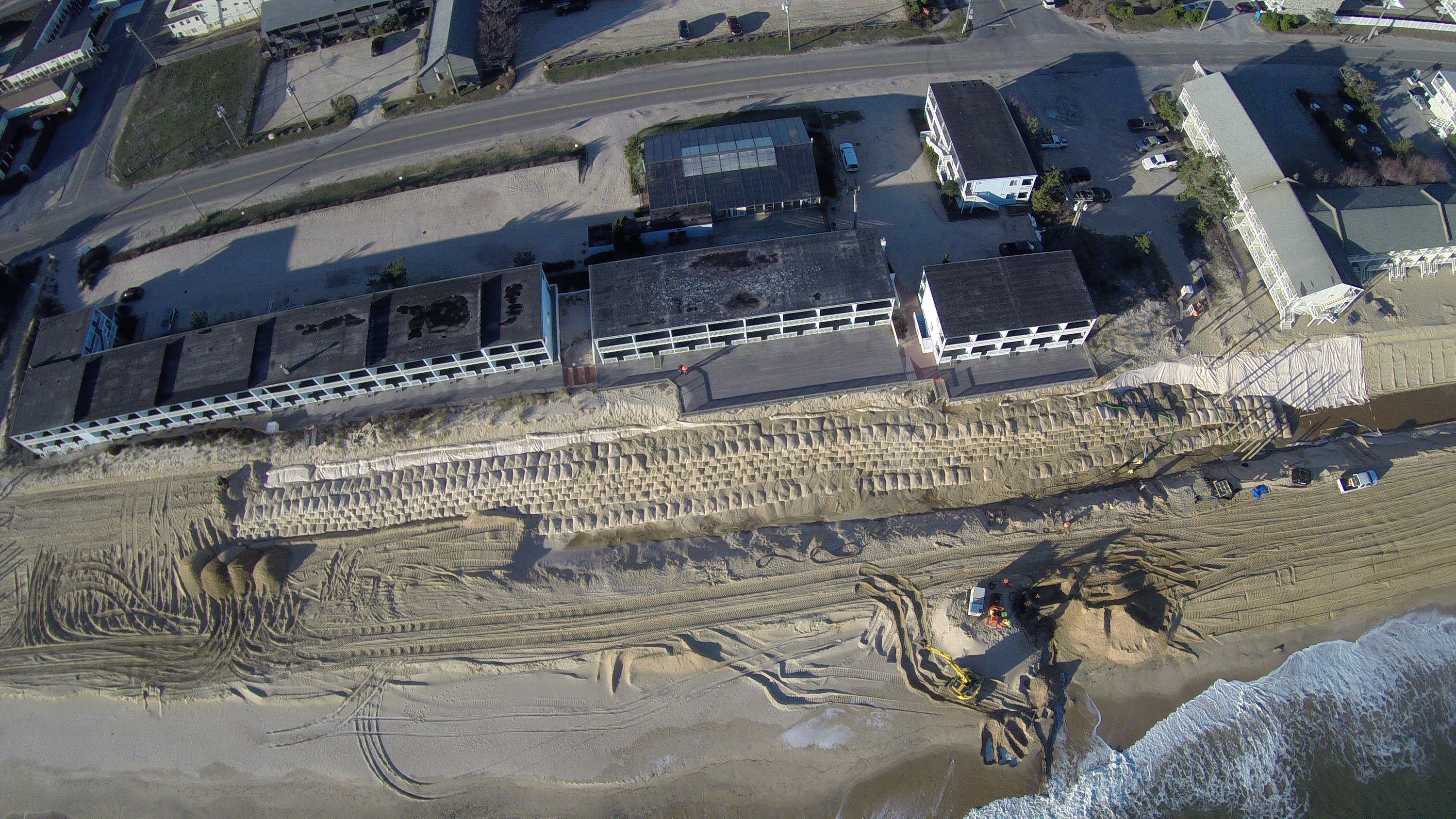
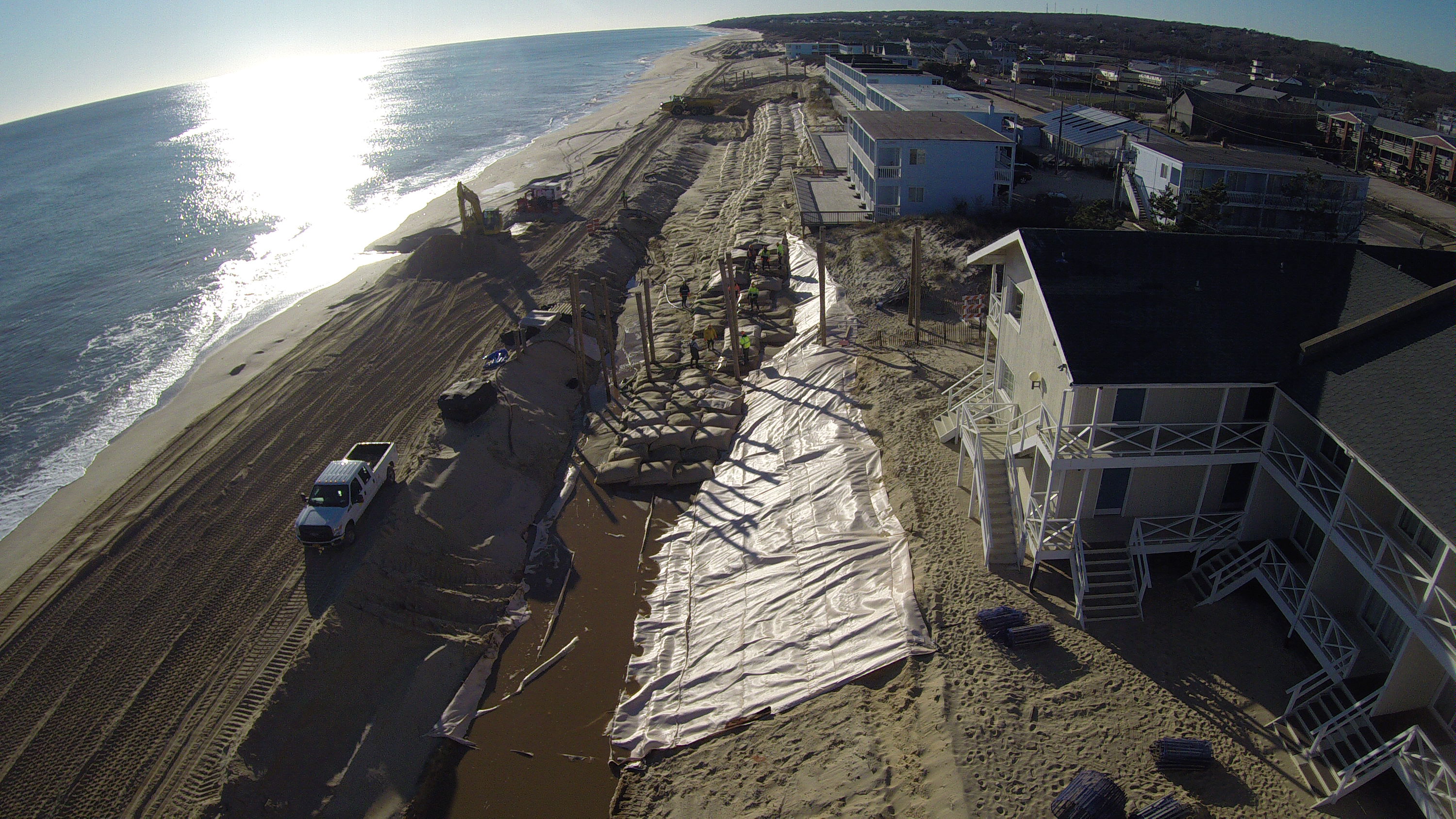

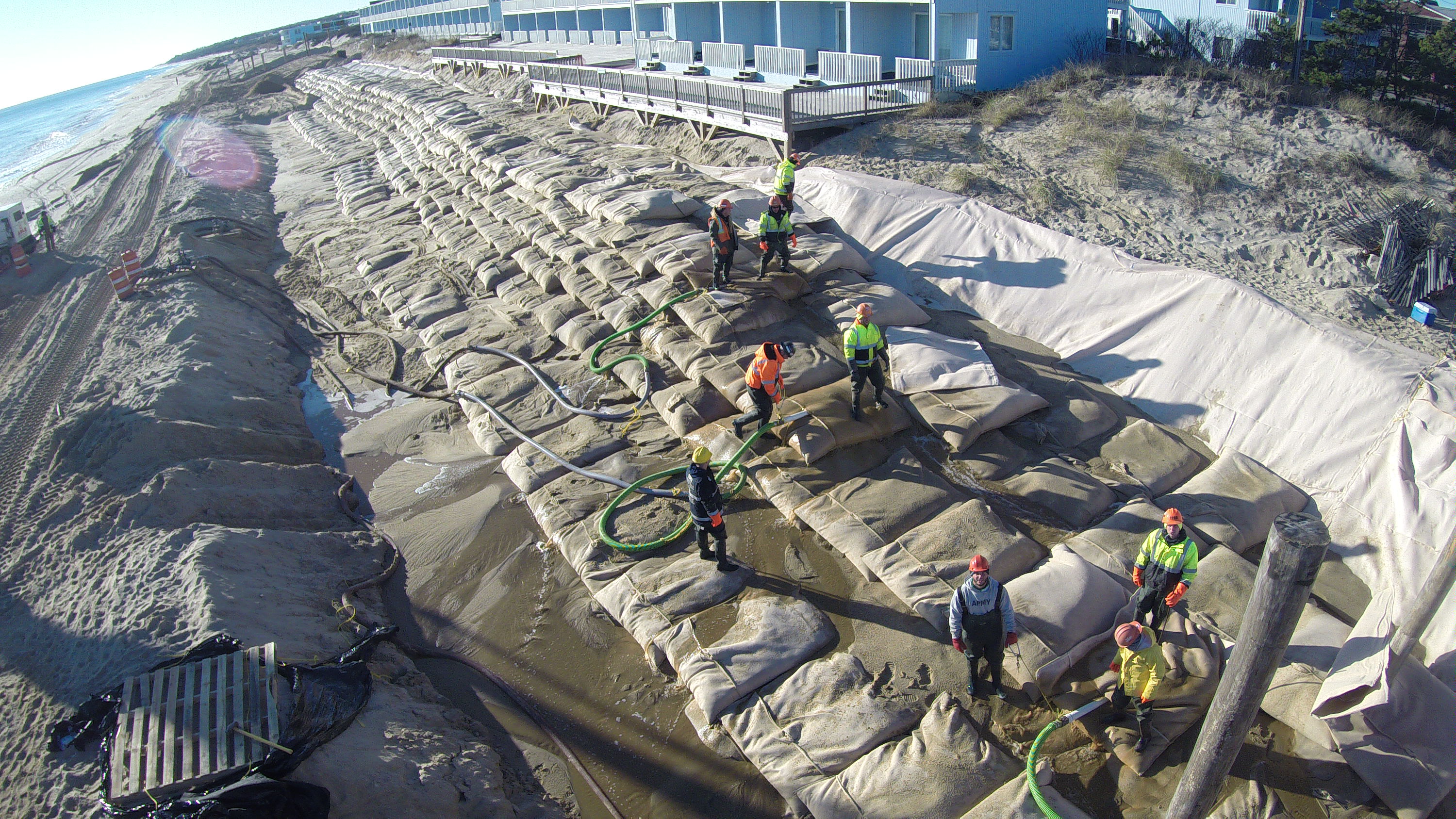
 TEXTILES.ORG
TEXTILES.ORG



